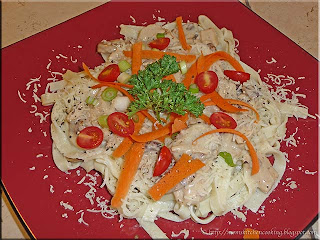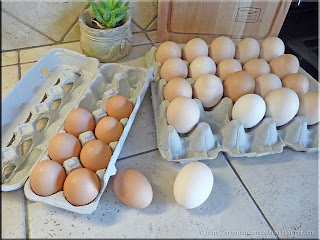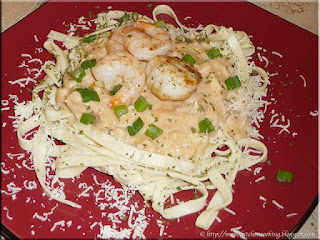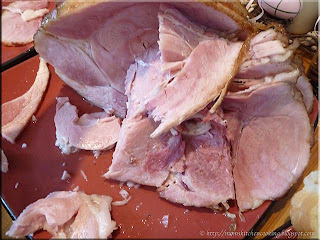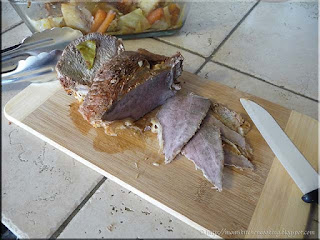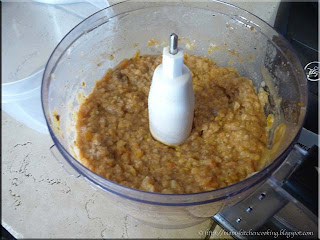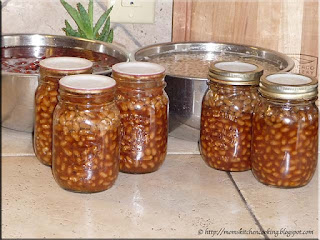
I make a lot of stock because I cook with a lot of stock. My reasoning is there is no point using water which has no flavour when flavour can be added using stock. More importantly using stock adds nutritional value. Meat or vegetable stocks can be used as the liquid in mashed potatoes or the liquid for cooking pasta, rice, barley, beans or vegetables in. It can be used as a liquid in some breads and biscuits. Stocks are also used for making soups, stews and casseroles. So in the big picture, the average home cook who cooks from scratch can use a lot of stock.
Homemade stocks are tastier and considerably less expensive than store bought stocks. Made from meat scraps (eg. bones, fat, skin) that many would toss, the frugal home cook realizes the potential savings. A litre of homemade stock comes in at only pennies in comparison to store bought that costs about $2 per litre. Contrary to popular belief that it takes hours to make a good stock, one can easily be made in a couple of hours using a pressure cooker. Here are a few tips for making stock:
- meat/bones - Choose bones with a little meat left on. You can use any type of meat: ham, beef, venison, moose, chicken, fish. Bones and meat scraps can be froze until you have enough to make stock. Roast meat bones and scraps for a richer flavoured stock with deeper colour. Place meat scraps and bone in countertop roaster or roast in the oven until browned.
- include the fat and skin - Both fat and skin add a lot of flavour to the stock so be sure to include those types of meat scraps in your stock making pot.
- vegetables - Good stock includes vegetables for flavour. The vegetables are removed later during the straining process. Typically, the vegetables for meat stocks include: onion, carrots, celery and/or celery leaves, and parsnip. Tomato may be added for a flavour boost in beef stocks. Wash but do not peel the vegetables. Cut both ends off the onion then quarter and add the unpeeled onion to the stock pot. The onion skin adds natural colour to the stock. Cut both ends from the 1 - 2 carrots and 1 parsnip. Cut into about 2 - inch pieces and add these to the stock pot. There is a lot of nutrition just below the skin on carrots and parsnips so this keeps the nutrition in the stock. Parsnip adds a lovely note to the stock. Celery should be washed then trimmed and cut into about 3 - inch pieces. Celery leaves add wonderful flavour to the stock. If using tomato, cut an unpeeled washed tomato into quarters and add to stock pot or use about a cup of crushed tomatoes.
- seasonings - Unless making a stock for a specific purpose, I don't heavily season my stocks. The reason being, it makes the stock more versatile. I use 1 bay leaf, 5 - 6 whole peppercorns, a splash of Worcestershire sauce for red meat stocks, and about a half teaspoon sea salt.
- cooking - Stock making is generally a long, slow cook process unless using a pressure canner. If using a regular stock pot, cover the bones and vegetables with water to about 2 - inches below the top of a large stock pot. Bring to a boil, reduce heat to a simmer. Cover and let simmer adding more water if necessary for about six hours. If using a pressure cooker, cover bones and vegetables with water to the 2/3 mark. Cover and bring to pressure. Reduce the heat just low enough to maintain pressure. Cook at pressure for 50 to 90 minutes. Turn off heat and allow pressure cooker to de-pressurize.
- straining - Remove any chunks of meat with a slotted spoon and reserve for soup. Strain the remainder through a colander to remove bones, skin and vegetables. Strain the stock again through a cheese cloth lined mesh strainer.
- defatting - Defatting the stock gives a lovely flavoured, low-fat stock suitable for most culinary purposes. Allow the stock to cool completely. Peel the hardened fat off the top. Chicken stock can be defatted using a gravy separator while it is still warm.
- concentrating - Stock can be reduced to a concentrated stock, ideal for culinary applications where you want the flavour but not a lot of additional liquid. Bring the defatted stock to a boil then reduce heat to a low boil. Boil until the stock is reduced by half or three quarters. Concentrated stock will gel when cooled.
- storage - Stock can be refrigerated for 3 days in the refrigerator for use that week as well as home canned or froze for longer storage. Home canned gives a ready to use, shelf stable stock without having to thaw. Concentrated stock can be spooned into ice cube trays, froze then popped out and stored in a zipper freezer bag in the freezer for convenient use. A 2 oz frozen concentrated stock cube is equivalent to 4 to 8 oz of stock depending on how much you reduced the original stock.










